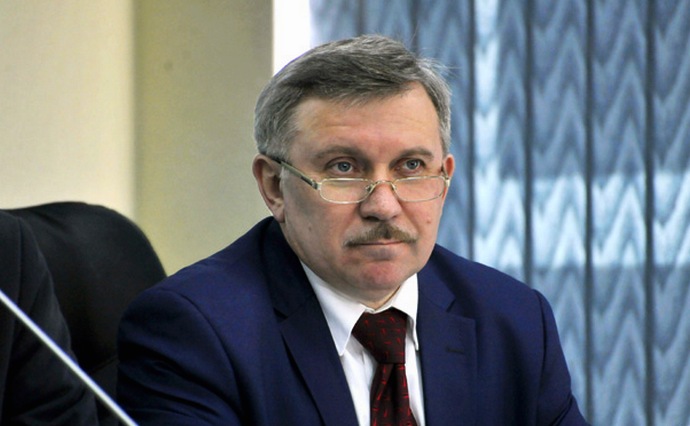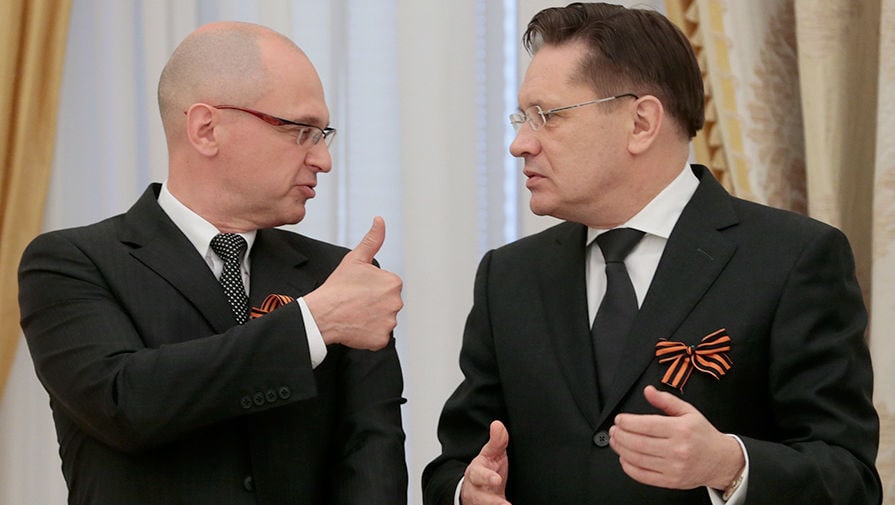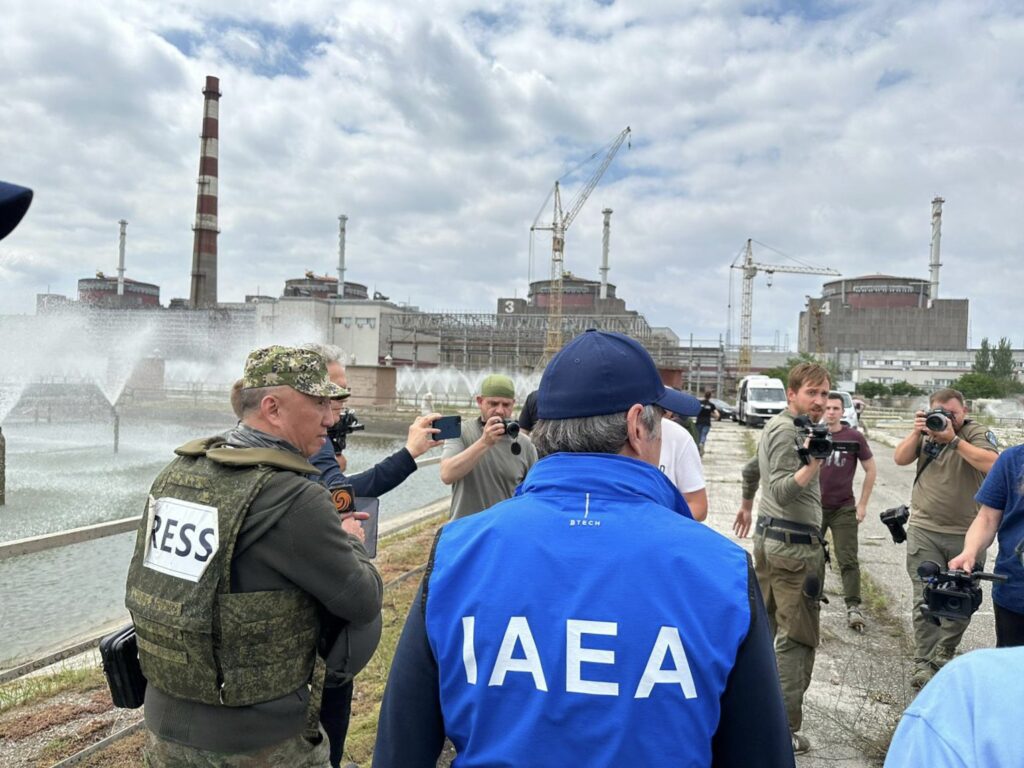Concerns are growing over Russia’s efforts to restart the Zaporizhzhia Nuclear Power Plant (ZNPP), the largest nuclear facility in Europe. While official statements suggest the plant could soon reconnect to Russia’s grid, the technical and political reality on the ground is far more complex.
Meanwhile, Rosatom—the state-owned corporation now managing ZNPP—remains largely unsanctioned by the West, even though it plays a central role in Russia’s nuclear weapons program.
In this in-depth report, energy analyst Mykhailo Gonchar explains what’s really happening inside the plant—and why it matters far beyond Ukraine.
The water crisis that changed everything
The current phase of the nuclear crisis began in March 2022, when Russian forces took control of the Zaporizhzhia NPP. Despite the occupation, the facility initially continued to operate. But the risks from military activity soon became too great. By September 2022, all six reactors were placed in cold shutdown.
The real turning point came on 6 June 2023, when the Kakhovka Dam was destroyed, eliminating the plant’s primary source of cooling water. Since then, ZNPP has been forced to rely on limited groundwater reserves.
“Zaporizhzhia NPP was built in that exact location for a reason—because a lot of water is needed,” says Gonchar.
The plant was originally intended to be the world’s largest, with 10 reactors. Only six were completed, as plans were scaled back following the Chornobyl disaster—but it still became Europe’s largest nuclear facility—and one that now lacks the essential infrastructure for safe operation.

Behind Moscow’s messaging: The real plan
Since occupying the plant, Russia has made repeated claims that ZNPP will be reconnected and restarted. According to Gonchar, those claims are politically driven and technically misleading.
“They’re considering launching one or maybe two units — that’s the internal plan,” he says. “But publicly, they act like everything is ready and will work immediately.”
Gonchar notes that the Kremlin is exerting intense pressure on Rosatom. Former chief Sergey Kiriyenko, now a senior presidential adviser, is pressuring his successor, Alexey Likhachov, to show progress. But the technical team is hesitant.
“The reactors have sat idle for three years, with no proper maintenance or inspections. Restarting even one poses a serious danger.”
The stakes are high. If something goes wrong—even a minor incident—the political fallout could be severe.
Why restarting the plant isn’t technically possible
One of the least understood obstacles is technological incompatibility between Ukrainian and Russian nuclear systems.
“People assume the VVER reactors in Ukraine and Russia are the same,” Gonchar says. “Yes, the core hardware is similar. But everything around it—the energy periphery—is completely different now.”
Beginning in the mid-2000s, Ukraine partnered with Westinghouse —a company of American origin— and European firms to modernize its entire nuclear infrastructure. These upgrades weren’t just about fuel—they included safety systems, control units, and compliance with EU and WENRA standards after the Fukushima disaster.
“Our systems now function entirely differently than Russia’s. The two are no longer compatible.”
With only a third of the original Ukrainian staff remaining at ZNPP, and Russian replacements unfamiliar with the Westernized systems, a safe restart is not technically feasible.
“They say they can. They claim they know everything. But in reality—they don’t.”

Is Russia rebuilding the grid?
Recent satellite imagery shows new transmission lines and towers between occupied areas like Mariupol and Berdiansk. Some reports suggest these could be used to reconnect ZNPP to Russia’s grid.
But Gonchar says appearances are misleading.
“Yes, they say some lines are done—just flip the switch. And we’re supposed to believe everything is ready. But nothing is ready.”
Electricity from ZNPP is generated at 750 kilovolts, far above consumer-level power. For it to be usable, it needs to pass through multiple step-down substations—none of which currently exist in the occupied zone.
“You can’t launch anything—nuclear or conventional—without a complete transmission chain. If any part is missing, nothing works.”
Why Russia wants Zaporizhzhia online (it’s not about power)
According to Gonchar, Russia’s motivations are geopolitical, not economic or technical.
“For the Kremlin, commercial considerations are secondary. What truly matters is the ability to use the plant as a powerful tool of nuclear blackmail.”
If even one reactor were restarted, the risk of a nuclear incident would rise significantly. That risk could be used as leverage in negotiations—particularly if Moscow blames future sabotage or drone attacks on Ukraine.
“With reactors in cold shutdown, the risk is nearly zero. But once a unit runs at full capacity, the situation changes completely.”
There’s also a regional energy incentive. Russia’s southern grid has long suffered from shortages, especially after the annexation of Crimea in 2014. Reconnecting ZNPP could relieve pressure on those systems—if it were actually possible.
The real threat: Rosatom is a nuclear weapons enterprise
Rosatom presents itself as a civilian nuclear energy firm. But its primary mission is nuclear weapons production. Of its approximately 340,000 employees, around 88,000 work in nuclear weapons divisions, while about 62,000 are involved in civilian nuclear energy.
“Rosatom includes over 400 enterprises,” Gonchar explains. “Its top division isn’t civilian energy. The main one is nuclear weapons.”
This matters because every contract signed with Rosatom—for fuel, reactors, or services—helps fund Russia’s military-industrial complex, including warhead production.
Rosatom is also a vehicle for importing dual-use technology. Many of its international transactions are labeled as “machine-building products”—a category broad enough to cover nearly anything—allowing it to sidestep sanctions and obtain components that can be used in both civilian and military applications.
“They say it’s for the Rostov or Leningrad NPPs,” Gonchar adds, “but the same components can be used in missiles, drones—anything.”

Global influence: The “nuclear octopus” strategy
Rosatom’s influence didn’t happen overnight. Over the past two decades, it quietly built dependency through low-cost nuclear fuel deals and technical cooperation.
“After the Cold War, the Russian nuclear octopus penetrated Western industrial and political systems by offering cheap fuel,” says Gonchar.
Countries like Hungary, Slovakia, and France remain deeply tied to Rosatom. France, despite having its own nuclear sector, imports Russian fuel and has resisted EU sanctions.
“France resists EU sanctions against Rosatom more than anyone,” Gonchar notes.
Even the US has exposure. Rosatom-linked firms like Uranium One sell directly into the American market.
“Everyone knows it’s Rosatom—but it’s still treated as normal business.”
A striking example is Framatome’s project in Germany, where a Rosatom-licensed facility is being developed in Lingen under the pretense of fuel diversification.
“They claim it’s an alternative to American fuel,” Gonchar says. “But Westinghouse fuel isn’t even American anymore—it’s made in Sweden at former ABB facilities.”
Not all countries have remained dependent. Finland is a rare success story: after Russia’s full-scale invasion of Ukraine, it fully severed its nuclear ties with Moscow.
The global fallout if ZNPP fails
A nuclear incident at Zaporizhzhia wouldn’t just be a local disaster. It would undermine Rosatom’s global operations, including major projects in:
- Hungary (Paks NPP expansion)
- Türkiye (Akkuyu NPP)
- India (Kudankulam)
- Egypt (El Dabaa)
- Bangladesh (Rooppur)
“Such an incident would damage not just Rosatom’s reputation—but cause its international projects to collapse.”
Yet ironically, project delays often benefit Rosatom financially, since extended timelines mean higher costs and more revenue.
“Delays only work in Rosatom’s favor,” Gonchar notes. “Timelines stretch, costs rise—and Rosatom gets paid more.”
What about the IAEA?
Russia cannot restart ZNPP without the approval of the International Atomic Energy Agency (IAEA). While the agency has allowed limited inspections under occupation, it retains final authority on operational safety.
“They need IAEA approval step by step—not just a one-time check.”
According to Gonchar, if IAEA teams report no restart preparations, that likely reflects the truth. Even hidden activities would eventually be detected.

The real strategy: Optics over operation
What Russia can do, says Gonchar, is stage a performance—an on-camera ceremony to make it look like the plant is operational.
“They can arrange some show—a crowd, a switch, a camera. But within days, it would be clear this was just for show.”
The timing may be strategic. As potential geopolitical talks (e.g., a Trump–Putin meeting) loom, Russia may try to present ZNPP as a fait accompli—even if the reactors never truly come back online.
Bottom line: Nuclear risk as political leverage
The key technical and operational barriers:
- No cooling water
- Incompatible systems with Russian technology
- Loss of qualified staff
- Incomplete infrastructure
- Required IAEA approvals
- Elevated incident risk
But the bigger threat isn’t the restart itself—it’s the narrative of activity, the coercion, and the continued acceptance of Rosatom as a civilian actor.
“Rosatom is primarily a producer of nuclear weapons,” Gonchar warns. “It’s time the West acknowledged that.”
The opportunity to act remains—but the cost of further delay could be devastating.



